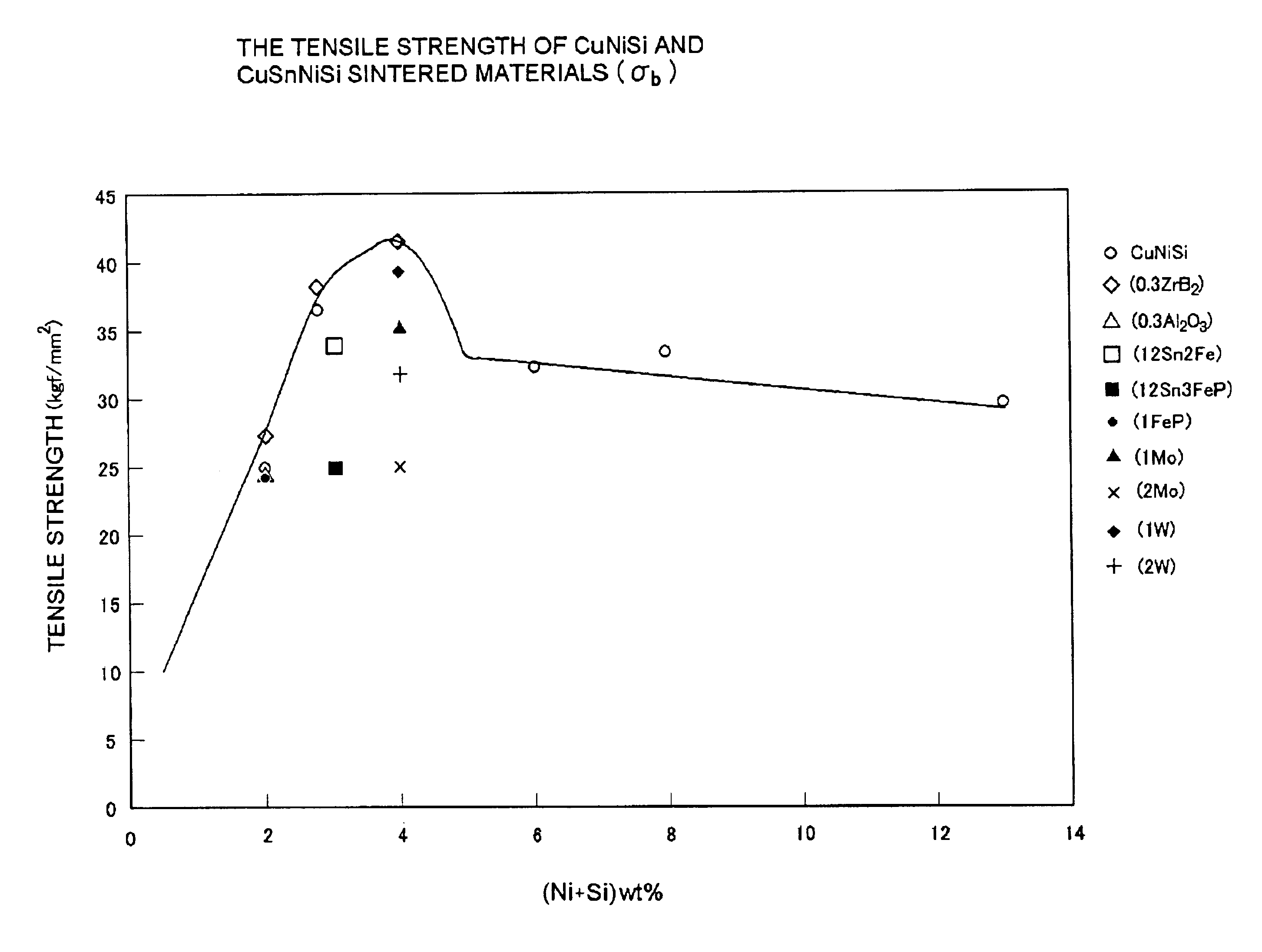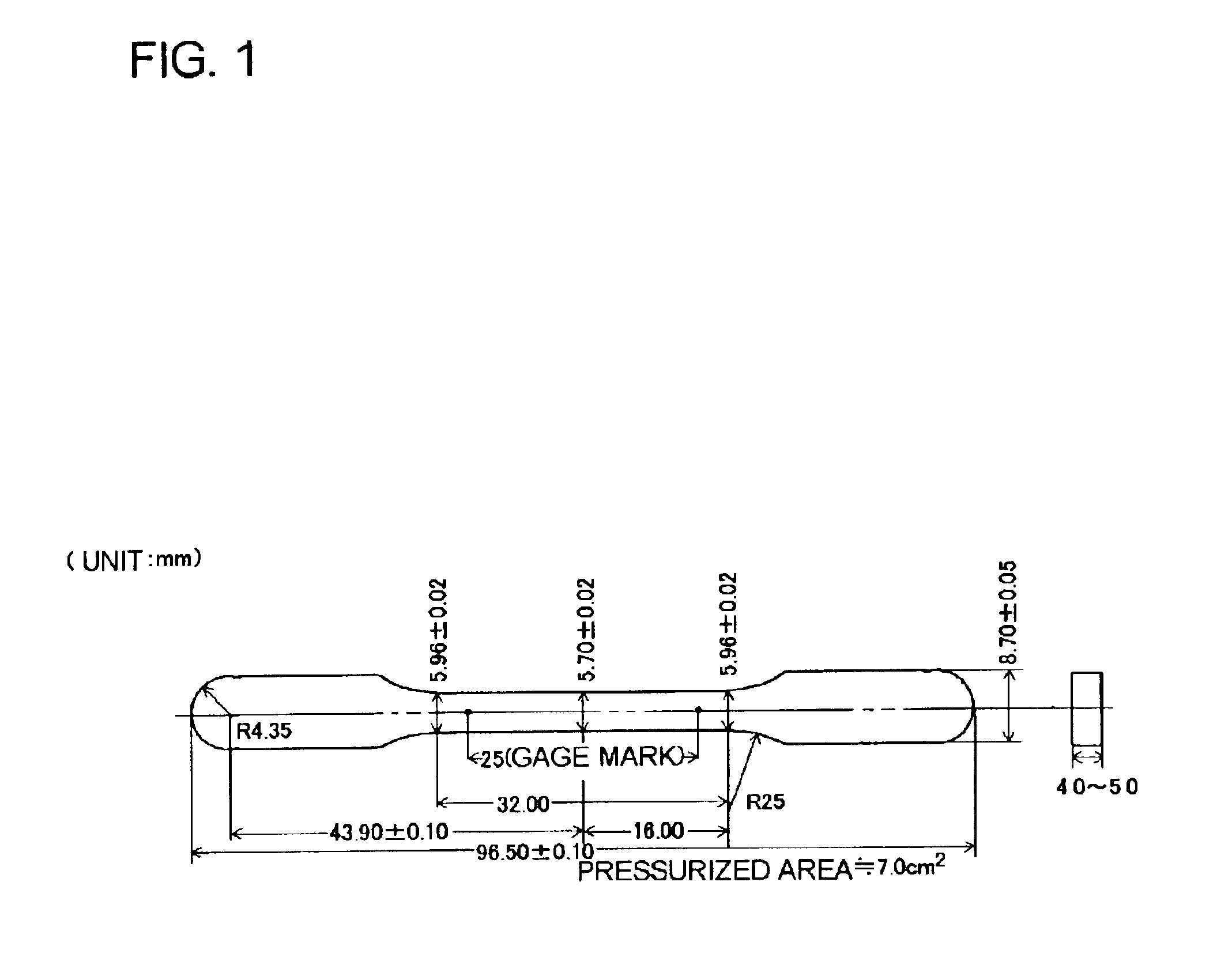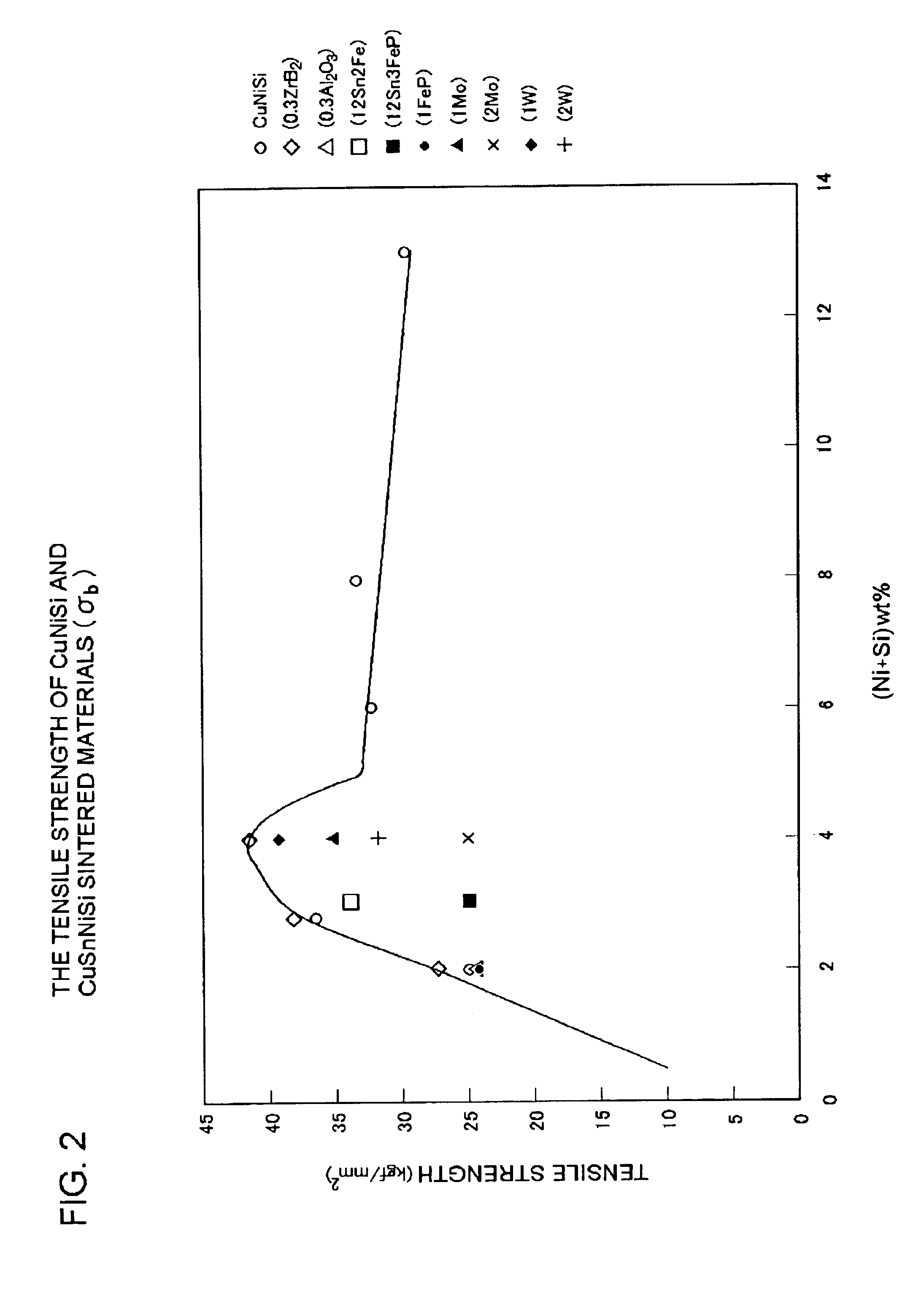Copper based sintered contact material and double-layered sintered contact member
a contact material and copper-based technology, applied in the direction of metal-layered products, basic electric elements, electrical appliances, etc., can solve the problems of poor comformability and a limitation of use under high load, wear resistance, and inability to ensure long-term durability
- Summary
- Abstract
- Description
- Claims
- Application Information
AI Technical Summary
Benefits of technology
Problems solved by technology
Method used
Image
Examples
example 1
The mixed powders shown in TABLE 4 were prepared using an electrolytic Cu powder (CE25, CE15); Si, TiH powders of #300 mesh or less; phosphor iron (Fe 25 wt % P); NiAl3; Ni, Fe powders having an average particle diameter of 5 μm; an Fe 48 wt % Co powder having an average particle diameter of 9.8 μm; an SiO2 powder having an average diameter of 21 μm; a zircon sand (ZrO2 SiO2) powder having an average particle diameter of 23 μm; Al2O3 powders having average particle diameters of 2 μm and 24 μm, respectively; a ZrB2 powder having an average particle diameter of 1 μm; a W, Mo, TiN powder; an MnS powder having an average particle diameter of 1.2 μm; and an artificial graphite (SGO) powder having an average particle diameter of 50 μm. These mixed powders were pressed at a compacting pressure of 2 to 5 ton / cm2, thereby forming green compacts. The green compacts thus formed were respectively sintered in an atmosphere of Ax gas (ammonia cracked gas) having a dew point of 35° C. or less. It ...
example 2
This example is associated with an investigation conducted on Cu—Sn bronze based sintered contact materials to which lead is added in amounts up to 3 wt %. The sintered contact materials used in this example were produced in the following way: The mixed powders shown in TABLE 6 were prepared using, in addition to the raw powder materials used in Example 1, Sn, Pb, Al, cemented carbide and Cu—30 wt % Zn which have a size of #250-mesh or less and Cr, Mn, MnSi, TiSi which have a size of #300-mesh or less. These powders were compacted at a compacting pressure of 2 ton / cm2 to form green compacts and then, the green compacts were respectively sintered in an atmosphere of AX gas (ammonia cracked gas) having a dew point of 35° C. or less. The sintering temperature varied depending on the compositions of the materials but ranged from 850 to 900° C. The sliding properties (PV value, ΔW) evaluated in the same way as in Example 1 are shown in TABLE 6.
TABLE 6CEMENTEDPVNo.CE15SnPbFePTiHNiSiAlZnSi...
example 3
This example is associated an investigation conducted on bronze based and lead bronze based sintered contact materials to which lead is added in amounts up to 25 wt %. The sintered contact materials used in this example were produced in the following way: The mixed powders shown in TABLES 7 and 8 were prepared using, in addition to the raw powder materials used in Example 1 and Example 2, KJ4 (25 wt % P—Cu alloy) of #250-mesh or less. These powders were compacted at a compacting pressure of 2 ton / cm2 to form green compacts and then, the green compacts were respectively sintered in an atmosphere of AX gas (ammonia cracked gas) having a dew point of 35° C. or less. The sintering temperature varied depending on the compositions of the materials but ranged from 800 to 860° C.
TABLE 7CE153.18 gr / cm3No.CuSnPbTiHNiSiSiO2FePMoWNiAl3FeCoCaF2PV VALUEΔ WmmC1Bal.1110.1555000.08C2Bal.1130.1560000.06C3Bal.1150.1560000.09C4Bal.1180.1560000.13C5Bal.11100.1555000.27C6Bal.11101275000.04C7Bal.111031750...
PUM
| Property | Measurement | Unit |
|---|---|---|
| particle diameter | aaaaa | aaaaa |
| particle diameter | aaaaa | aaaaa |
| size | aaaaa | aaaaa |
Abstract
Description
Claims
Application Information
 Login to View More
Login to View More - R&D
- Intellectual Property
- Life Sciences
- Materials
- Tech Scout
- Unparalleled Data Quality
- Higher Quality Content
- 60% Fewer Hallucinations
Browse by: Latest US Patents, China's latest patents, Technical Efficacy Thesaurus, Application Domain, Technology Topic, Popular Technical Reports.
© 2025 PatSnap. All rights reserved.Legal|Privacy policy|Modern Slavery Act Transparency Statement|Sitemap|About US| Contact US: help@patsnap.com



